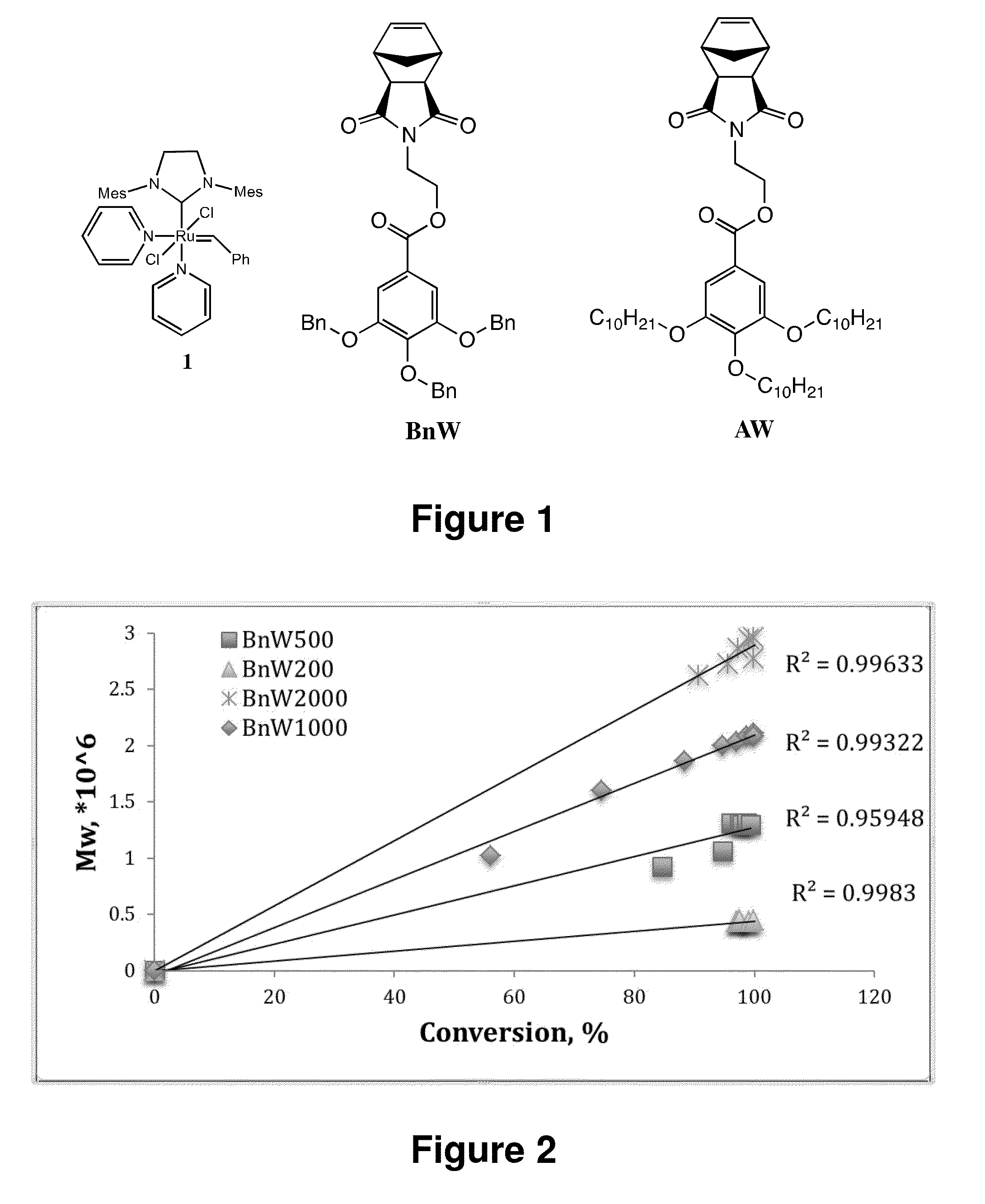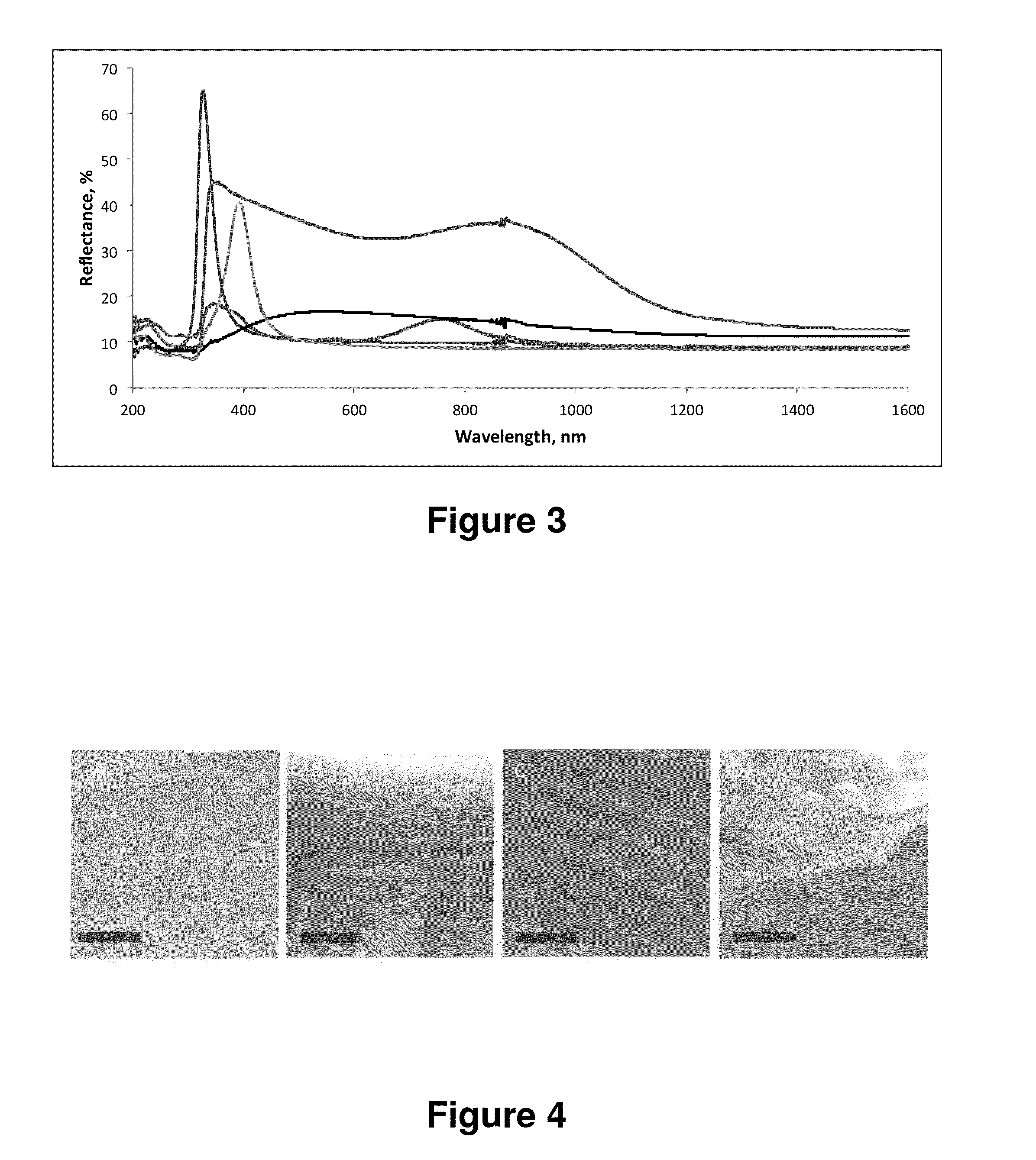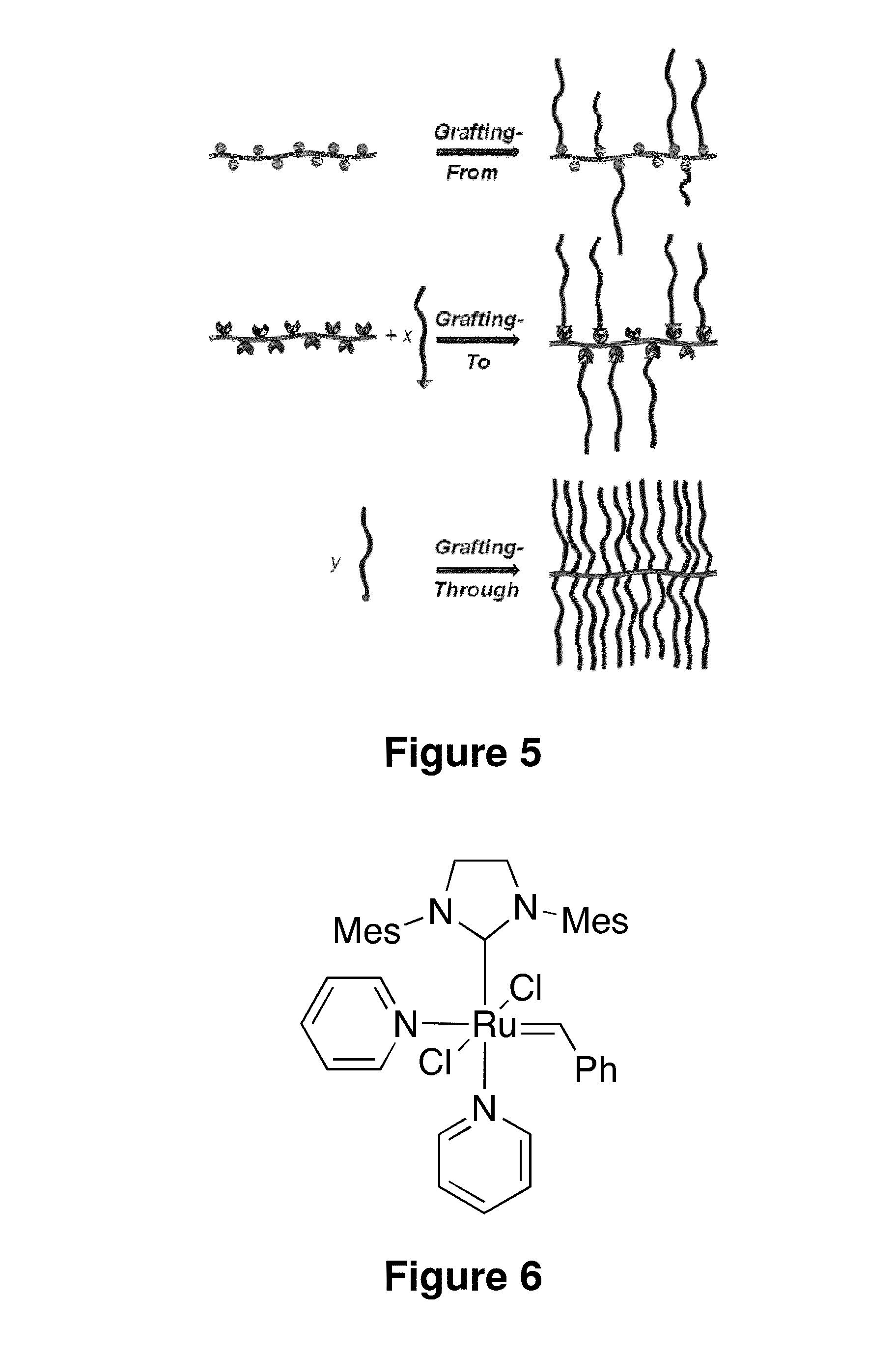Periodic Nanostructures From Self Assembled Wedge-Type Block-Copolymers
- Summary
- Abstract
- Description
- Claims
- Application Information
AI Technical Summary
Benefits of technology
Problems solved by technology
Method used
Image
Examples
example 1
Wedge-Type Block-Copolymers and their Self-Assembly to Photonic Crystals
[0100]The present invention provides a general approach to the synthesis of polymers with reduced chain entanglement and high persistence lengths, so called brush polymers. The employed strategy relies on the steric interactions of side groups attached to the main polymer chain. We have recently reported that brush block-copolymers (BCPs) constructed by means of ring-opening polymerization (ROMP) of lactide- and styrene- or hexyl isocyanate- and 4-phenylbutyl isocyanate-macromonomers (MM) can self-assemble to long-wavelength-reflecting photonic crystals (PCs) without the need for swelling agents.1,2 The “grafting-through” polymerization strategy of MMs affords highly uniform brush BCPs, where the sterically congested array of low MW side chains greatly inhibits chain entanglement and forces the unifying main chain to assume a highly elongated conformation.3 As a result, these brush BCPs rapidly self-assembled to...
example 2
Periodic Nanostructures Form Self-Assembly Wedge-Type Block Copolymers
[0128]In this example 2, we describe a simple method for fabrication of well-aligned, periodic nanostructures with large feature sizes upon either hard or flexible surfaces by using brush polymers and wedge-type block polymers. Brush and wedge-type BCPs can be made from a few different approaches such as grafting from, grafting onto and grafting through. All of them can be used for the fabrication of our system, but for our studies we used the grafting through approach for its guaranteed complete grafting and convenience with ring-opening metathesis polymerization to make a number of graft block copolymers of a variety of sizes. The grafting from approach is very compatible but not limited to norbornene derived macromonomers and gives good control over the backbone length and can be easily purified by methods such as but not limited to precipitation into an appropriate solvent. The primary purpose of the side chai...
PUM
| Property | Measurement | Unit |
|---|---|---|
| Time | aaaaa | aaaaa |
| Mass | aaaaa | aaaaa |
| Mass | aaaaa | aaaaa |
Abstract
Description
Claims
Application Information
 Login to View More
Login to View More - R&D
- Intellectual Property
- Life Sciences
- Materials
- Tech Scout
- Unparalleled Data Quality
- Higher Quality Content
- 60% Fewer Hallucinations
Browse by: Latest US Patents, China's latest patents, Technical Efficacy Thesaurus, Application Domain, Technology Topic, Popular Technical Reports.
© 2025 PatSnap. All rights reserved.Legal|Privacy policy|Modern Slavery Act Transparency Statement|Sitemap|About US| Contact US: help@patsnap.com



